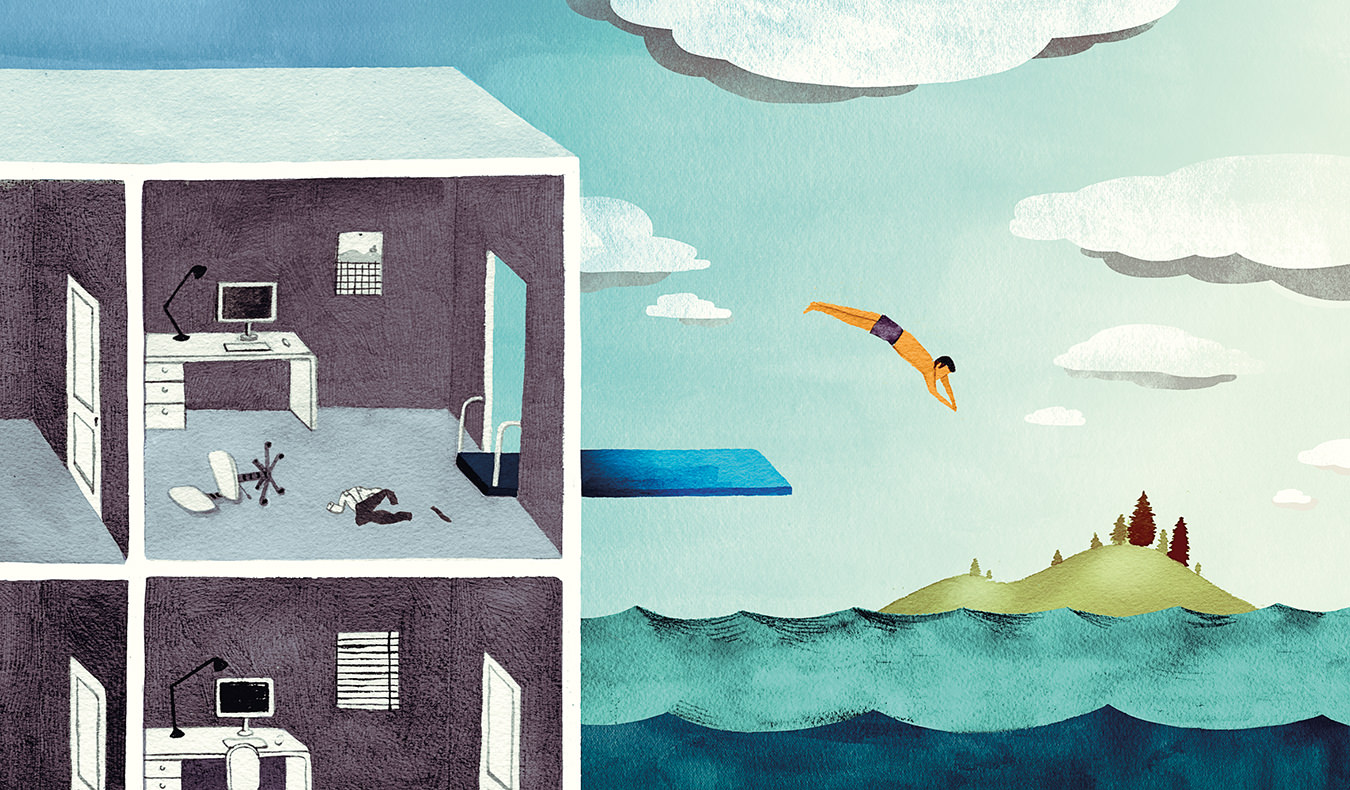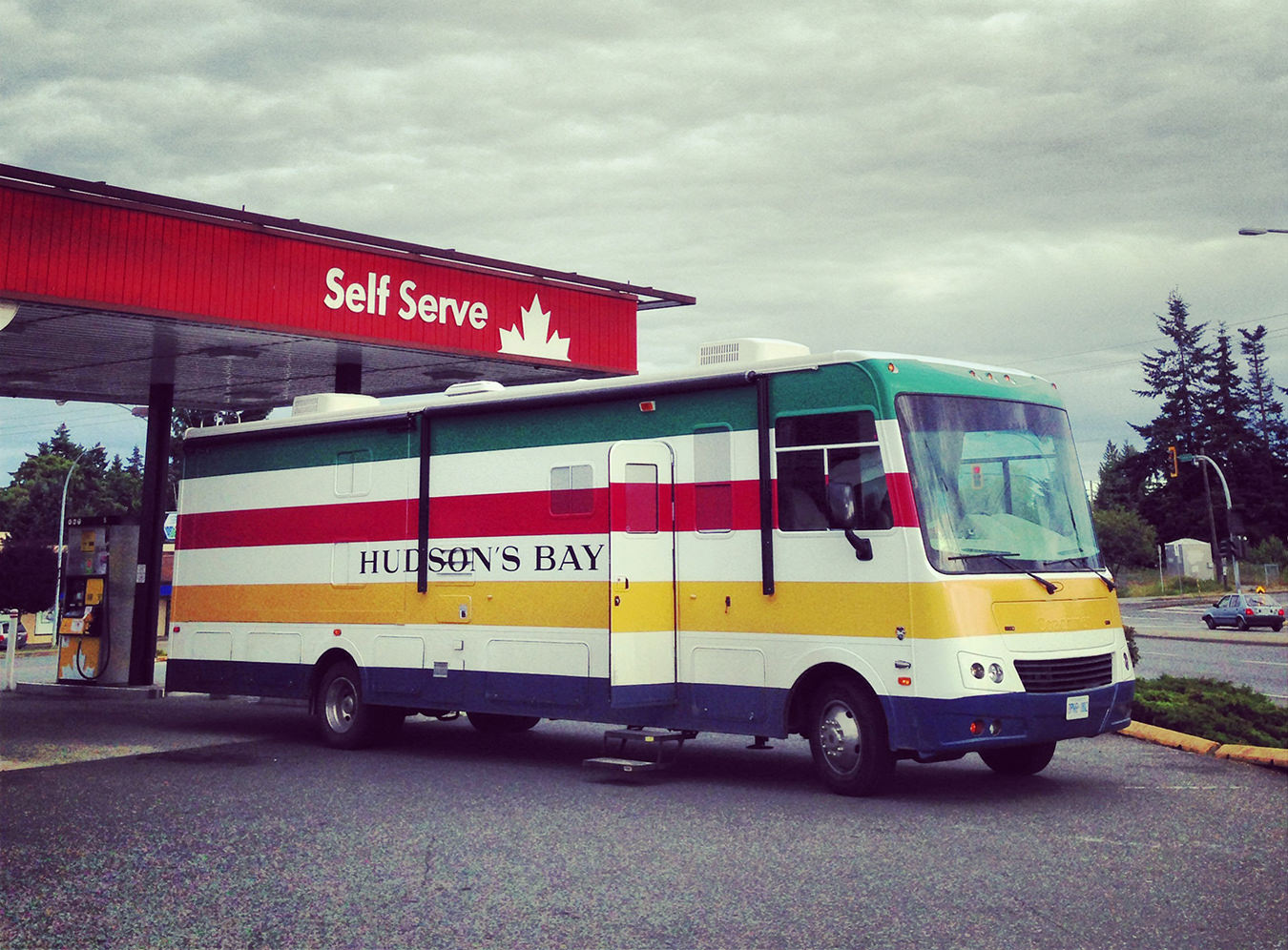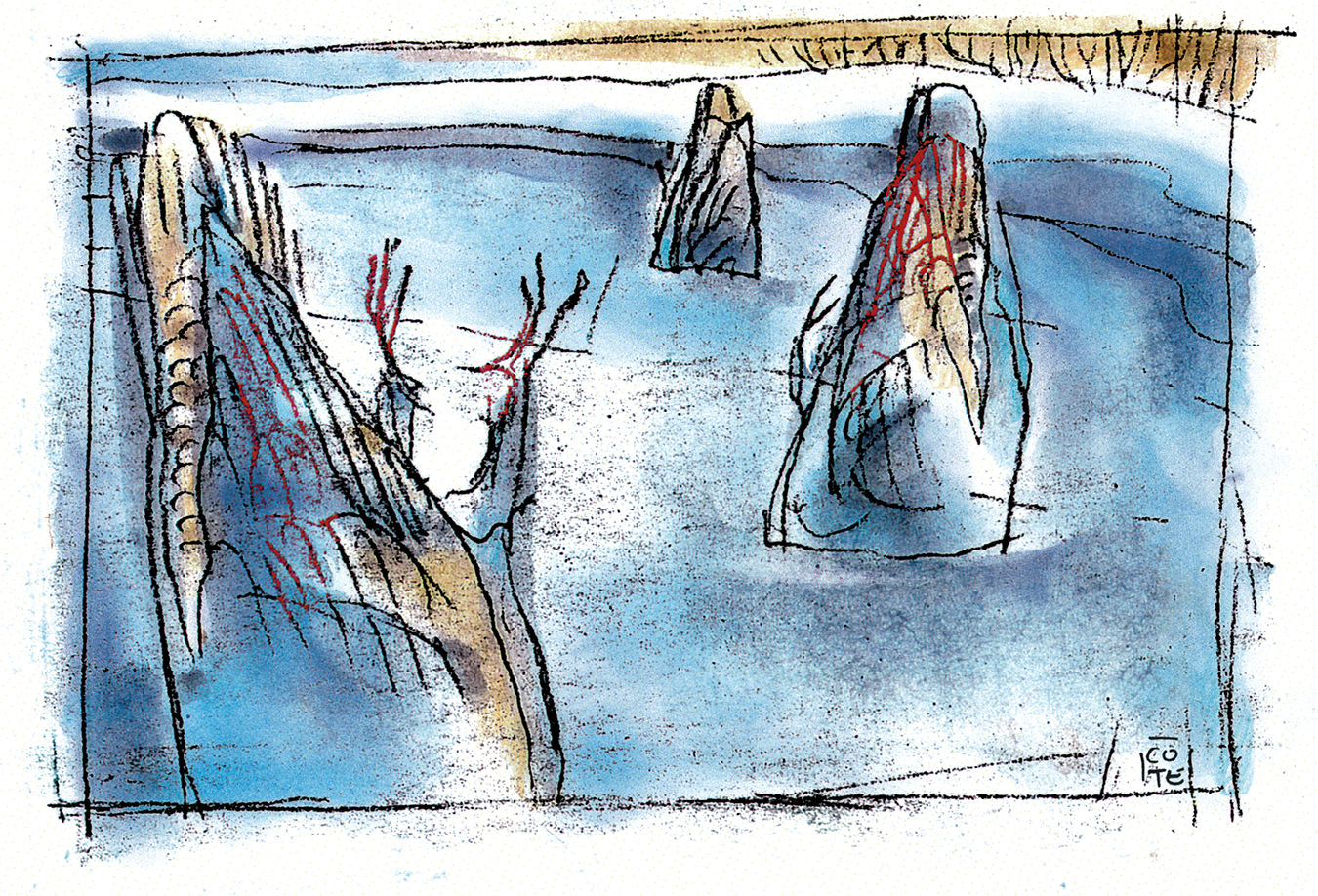
Acne Studios look.
The Director’s Cut: Kaniehtiio Horn Uses Comedy to Combat the Trauma of Anti-Indigeneity
Earlier this year, Horn showcased Seeds—her directorial debut that she also wrote, produced, and starred in.
The profound racism and countless tragedies Indigenous people have experienced over hundreds of years are no laughing matter. Yet for actor, writer, producer, and director Kaniehtiio (GANYE-dee-yo) Horn, comedy is a force that can be used to better the lives of herself and others. “How would we get this far if we were just walking around angry?” she remarks from her home on the Kahnawà:ke Mohawk reserve south of Montreal. Comedy “is part of our survival. I’ve grown up hearing laughter in the craziest times.” She remembers being a little kid going to sleep while the adults gathered in the other room talking about politics, yet there was still lots of laughter. “If we weren’t able to laugh, then that would be really, really sad.”
Horn is in full-on motherhood mode as we chat over Zoom. She is fresh from the shower after dropping her four-year-old son off at school and having breakfast with a cousin. Her hair is messily pulled up into a grey scrunchie, and a T-shirt that has MOM in huge letters covers her pregnant belly. She is expecting a daughter with her partner, Oronhiokewahton Watio Splicer, whom she has known since childhood. “We went to high school together. We were both raised in the same longhouse—like, we were both raised traditionally,” she explains. Splicer is a hunter, farmer, and forest ranger in upstate New York, so he is only home on weekends. “It might not work for everybody, but it really works for us,” she says.
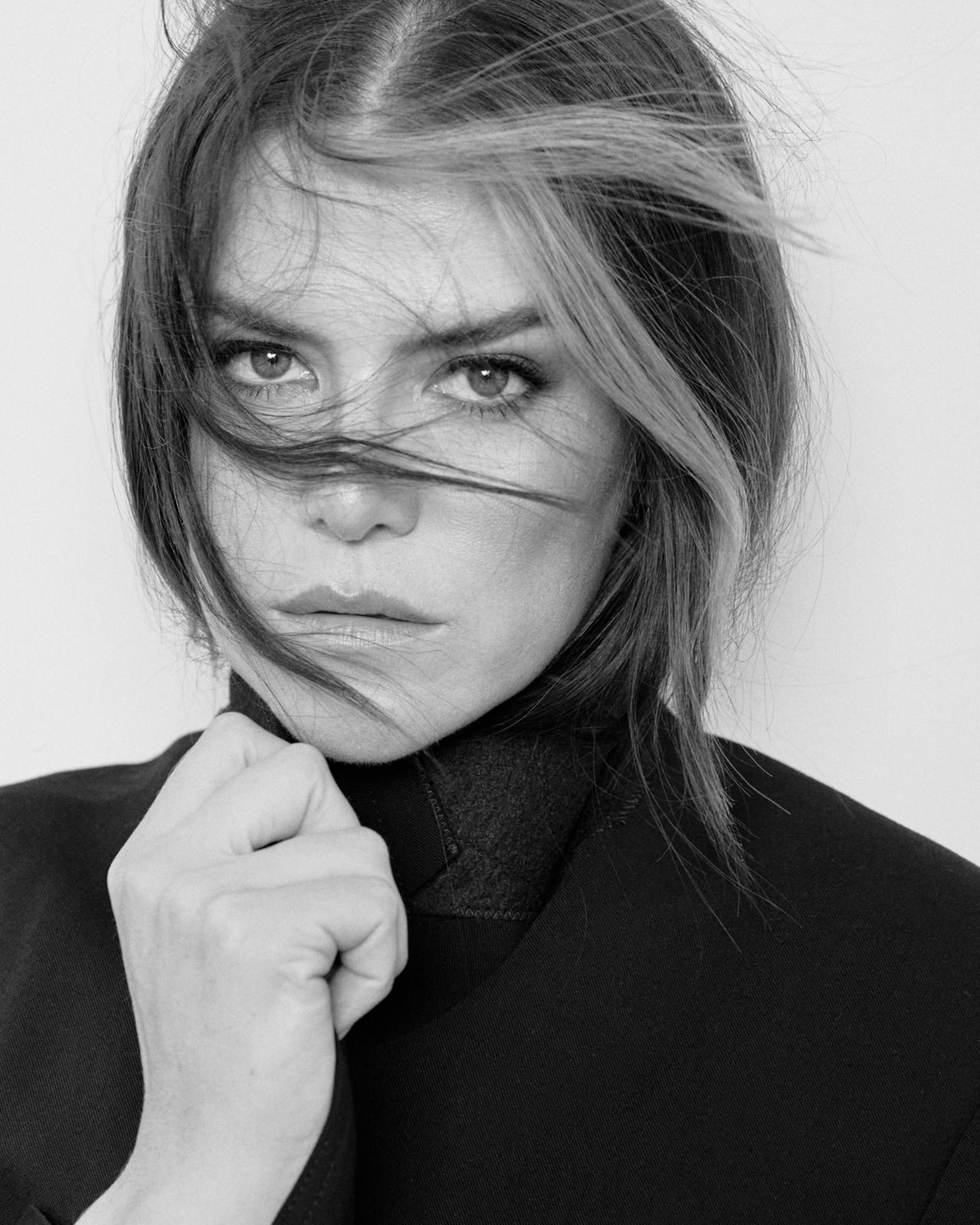
Acne Studios blazer.
Her own upbringing with six half-sisters was also loving, but not without its challenges. “When you grow up, and you see hate coming from every angle at you just for being who you are, it’s very rage fuelling,” she laments. Her mother, Kahentinetha Horn, was a Montreal-based model who was crowned Indian Princess of Canada in 1963 by the National Indian Council. But as an activist who pushed for Indigenous sovereignty and cultural preservation, she was arrested repeatedly. Many of the elder Horn’s experiences are documented in Coffee With My Ma, a podcast that details her adventures—good and bad—from her university days and travels to Cuba and Europe in the ’50s to her disturbing encounters with racism and police brutality. The segment titled “Ma’s Life Is Saved by a Full Length Faux Fur Coat” should be a mandatory listen for all Canadians.
The podcast is just one of the projects that keep Horn’s creative juices flowing between acting gigs. Her credits (some of which are under the name Tiio Horn because her reps at the time thought it would be easier to pronounce) include the hoof-footed Deer Lady in FX’s Reservation Dogs and the feisty Feather Day in Peacock’s Rutherford Falls. She has voiced a character in the Assassins’ Creed video game franchise and starred with Anna Kendrick in the 2022 feature film Alice, Darling. And she is probably best known as the badass Tanis in the sitcom Letterkenny, which ran for 12 seasons on Crave TV.
Even so, her greatest career achievement yet may be the comedy/horror film Seeds, which premiered at TIFF in September. Horn wrote, directed, and starred in the film, which starts off fun and lighthearted but descends into darkness with a final shot that is an unforgettable depiction of Indigenous defiance.

Hermès top; The Row shoes.
“It takes place in one place, like Home Alone, but for adults, and that’s basically how Seeds started,” she says. She plays Ziggy, a social media influencer in Toronto who scores a contract with Nature’s Oath, a seed and fertilizer company. Soon after, she is summoned back to her community to house sit for her aunt and learns that Nature’s Oath’s intentions are far from honourable. Things quickly turn bloody as Ziggy valiantly protects her aunt’s precious corn, bean, and squash seeds from theft.
“I was like, what would somebody be trying to steal? And I didn’t want it to be money, because I just thought that was so cliché,” Horn explains. “I thought, ‘What’s worth something to my people?’ And I thought, well, corn, beans—like, seeds—are our livelihood,” and arguably worth way more than money.
Though the film is compelling as a thriller, it is also rich in meaning, something Horn says she didn’t necessarily intend. She didn’t start out saying, “I’m going to make this brilliant movie with all these levels,” she shares. “But as I was writing the script, these things would come up organically. It was a huge lesson to me to let whatever is in there come out.” Later, she realized, “Oh, jeez, I guess I’m symbolizing colonialism and genocide.” She talked about it to her therapist, who said, “If you have all these things that you’ve experienced and that your mother has told you and that you’ve learned in your history classes, those are all inside you on a subconscious level, whether you know it or not.”

Hermès necklace; Carole Tanenbaum Vintage cuffs; Valentino dress.
Horn’s lived experiences include the Mohawk Resistance at Kanesatake in 1990, a 78-day standoff between Mohawk protesters, the Sûreté du Québec, the RCMP, and the Canadian Army. She was four when the clash occurred after the town of Oka, Quebec, decided to expand a golf course onto a sacred Mohawk burial site. She appears in a famous photo, clinging to her sister Waneek Horn-Miller, who was screaming in pain after being bayonetted in the chest by a soldier. “I remember when my sister was stabbed,” she recalls, describing the events of that summer. “It’s definitely in my bones and in my DNA,” she notes, her voice firm while discussing her sister suffering a wound that, a doctor told them, was a centimetre away from killing her.
___
Horn’s calm can be attributed to the work she has done to process her traumas, which stretched far beyond those 78 days. “For the people who were living here, and the people who lived through it, the aftermath was equally as horrible,” she states.
“The racism was palpable. Going outside the communities after they had burnt effigies of you, and then having to go grocery shopping or play a sports team from that place. We had checkpoints to come in and out of our reserve. It was very violent, very angry, very sad. And that is something that I didn’t really realize was affecting me as much as it was until maybe six or seven years ago. I struggled with addiction basically most of my life, and I didn’t understand why, because I didn’t see it growing up in my immediate family. My sisters and my mom and dad, they’re successful.” One of Horn’s sisters is a doctor, another is an academic, and her father is a retired national security lawyer who lives in Ottawa, where Horn was born and spends much of her time. Horn-Miller, the sister she clung to at the Mohawk resistance, is a First Nations advocate and was co-captain of the Canadian women’s water polo team at the 2000 Sydney Olympics.
Horn also did well at water polo. She played for the youth national team, and the day after returning from her last tournament in Hawaii, she started theatre school at Dawson College. “I went from being a jock to an artist,” she chuckles. “And I was like, ‘I don’t belong here. These people are freaks.’” She almost quit several times, but her mother encouraged her to finish her first semester, and by then she was hooked.
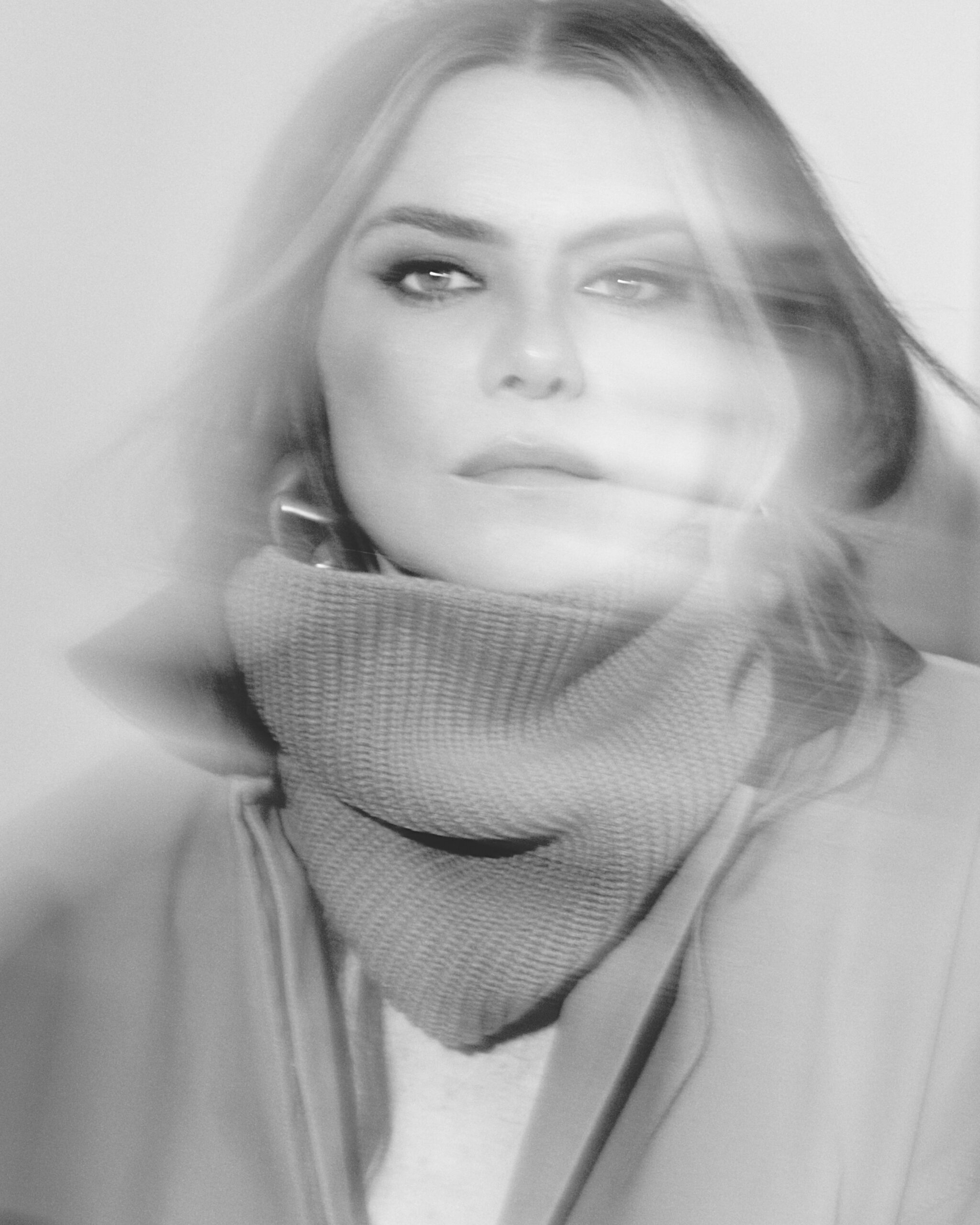
Hermès look.
Venturing beyond acting has been scary yet empowering for Horn, although she has enjoyed directing and savoured her appearances at TIFF. To be seven months pregnant and debuting as a filmmaker is a once in a lifetime thing, she says. To celebrate both the film premiere and the new life within her, she had Tlingit artist Jennifer Younger create earrings and belly jewellery incorporating corn seeds, which she wore on the red carpet with a black crop top and low-slung trousers. Her TIFF wardrobe also included earrings by Birch Trail, made with seeds from a friend’s garden, and white corn stud earrings by Takaienhne Herne. “They look like pearls,” she says, holding the pieces up, then picking up the computer to show her home. She is especially chuffed about the wallpaper she designed with Montreal’s Mezari Atelier: line drawings of tobacco, cedar, sage, and sweetgrass with some whimsical Bic lighters thrown in. She enjoys cooking, so her spacious kitchen has plenty of counter space and an old-school recipe box with some of her favourite dishes, including crepes and a green goddess salad. She aims the lens toward a window, pointing out her mother’s home next door. Having an extra pair of hands nearby will come in handy when her daughter arrives—Horn has several projects in development and is writing her next feature.
___
“I think everybody expects me to make a movie about my experience during 1990,” she says. “I will maybe one day, way down the road. But what I want to do now, which I think is more important, is to make a movie that takes place between a Friday and a Monday in Kahnawà:ke in 1993 and follow a small family and their day-to-day life.”
She wants others to understand how hard it was to be a child living amid the violence and hatred of the time. “That’s one of my missions,” Horn declares. “I want to be acknowledged for being a child that was put through that, and I want the other people who were children during that to be acknowledged as well.” In addition to writing it, she will likely direct it and star in it, “but I’m not going to be in every freaking frame of the movie, because that almost killed me,” she says with a laugh, referring to her near-constant presence in Seeds.
In the meantime, she is enjoying everything she has created, both personally and professionally. She remembers walking around her house before TIFF and thinking, “Wow. I’m happy.” It’s the first time she has been able to say that in complete confidence, she says. “I’m happy where my career is. I’m proud of myself for getting myself to this place. I’m happy with my relationship. I think we have something really special.” It’s also a win that her son is almost four years old and hasn’t experienced any form of trauma: “I’m very proud of myself for providing such a safe life for him.”

